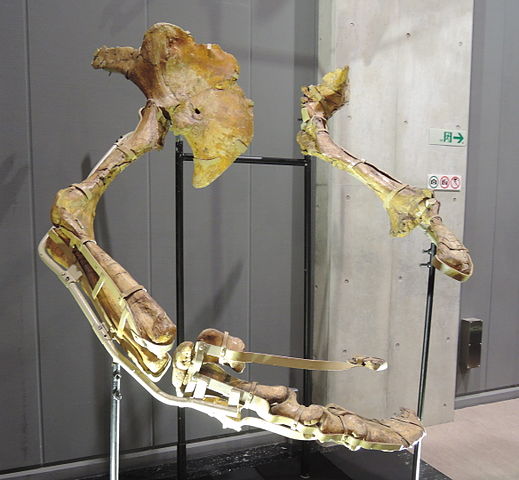Therizinosaurus, an enigmatic dinosaur from the Late Cretaceous period, is known for its bizarre appearance and long, scythe-like claws. Here are key facts about this fascinating giant:
1. Discovery and Naming:
- Initial Discoveries: The first fossils of Therizinosaurus were discovered in the late 1940s in Mongolia.
- Name Meaning: The name “Therizinosaurus” means “scythe lizard,” reflecting the dinosaur’s unique and imposing claws.

2. Classification:
- Therizinosaur Group: Therizinosaurus is a member of the therizinosaur group, a set of herbivorous theropod dinosaurs known for their unusual features.
- Theropod Heritage: Despite its herbivorous diet, Therizinosaurus belonged to the theropod clade, which typically includes carnivorous dinosaurs.
3. Physical Characteristics:
- Size: Therizinosaurus was a large dinosaur, with estimated lengths ranging from 23 to 33 feet (7 to 10 meters).
- Long Claws: Its most distinctive feature was its extremely long claws, which could reach lengths of up to 3 feet (about 1 meter).
4. Diet and Feeding Behavior:
- Herbivorous Diet: Unlike many other theropods, Therizinosaurus was herbivorous, feeding on plants and foliage.
- Use of Claws: The purpose of its long claws remains a subject of debate. Some theories suggest they were used for reaching vegetation, while others propose a defensive function.
5. Anatomy and Skeleton:
- Long Neck and Tail: Therizinosaurus had a long neck and a long, slender tail.
- Feathered Appearance: Like many therizinosaurs, Therizinosaurus is believed to have been covered in feathers, although direct evidence is limited.
6. Habitat and Distribution:
- Geographic Range: Fossils of Therizinosaurus have been found in Mongolia, in the Nemegt Formation.
- Cretaceous Environment: It lived during the Late Cretaceous period, approximately 70 to 75 million years ago.
7. Behavior and Lifestyle:
- Sedentary Lifestyle: Therizinosaurus is thought to have had a relatively slow and sedentary lifestyle, given its herbivorous diet and large body size.
- Possible Social Behavior: Some evidence suggests that therizinosaurs, including Therizinosaurus, may have exhibited social behavior, potentially living in family groups.
8. Close Relatives:
- Therizinosauridae Family: Therizinosaurus is a member of the Therizinosauridae family, which includes other therizinosaurs like Beipiaosaurus and Nothronychus.
- Diverse Group: Therizinosaurs were a diverse group with various body sizes and adaptations.
Therizinosaurus, with its peculiar features and herbivorous lifestyle, remains a mysterious and captivating dinosaur in the study of prehistoric life. Ongoing research and fossil discoveries continue to enhance our understanding of this enigmatic giant from the Cretaceous era.











